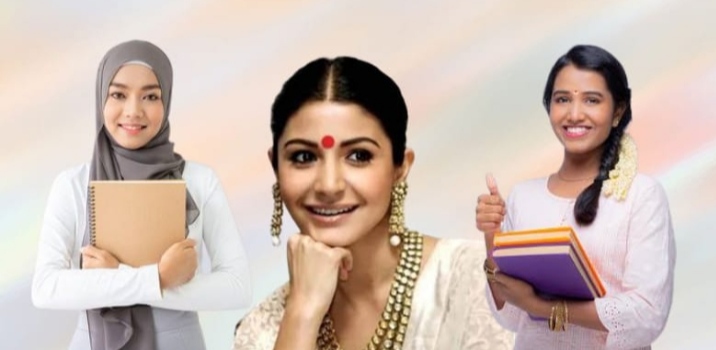As per the Indian Constitution, citizens of the country have the freedom to practise their religion as a fundamental right, subject to several restrictions. The constitution protects the important religious practises of a religion, except on grounds such as morality, health, public order and other provisions in the fundamental rights.
Recently, a controversy over the hijab or headscarf worn by Muslim females arose in the Karnataka state and has grabbed national attention now.
What is hijab?
Hijab is a clothing or scarf worn by Muslim women to cover their head, neck and face some times. It is a part of their tradition and they believe that it signifies modesty and privacy and protects them from any kind of harassment.
How did the hijab controversy start?
A month ago, six muslim girls studying at a Goverment Pre-University College in Udupi district were denied entry into their classroom. The administration alleged they were defying the stipulated dress code by wearing hijab.
Udupi MLA Raghupathi Bhat, head of the college development committee, asked the students to follow the college dress code while attending classes.
The students alleged that they were not allowed to attend classes wearing hijab.
Protesting against the same, they filed a petition in the Karnataka High Court and approached the National Human Rights Commission (NHRC).
The PU students even claimed that people belonging to other religions like Hinduism are allowed to wear bindi and bangles. Therefore, the ban on hijab violates their right to freedom of religion.
The issue of Hijab ban started to gain attention and the row spread to other parts of Karnataka.
The spread of hijab row
While the female students protested that they cannot be barred from attending classes following a ‘sudden change in the dress code’ to ban hijab.
A group of boys in Kundapur and Udupi entered into college chanting Jai Shree Ram wearing saffron shawls, in protest against few girls attending classes wearing hijab. Even the boys were not allowed to enter the classroom and were insisted to follow the dress code.
There was an unexpected twist when in Chikkamagaluru IDSG Government First Grade College students arrived with blue shawls raising their voice in support of Muslim Girls and their religious practice of wearing hijab.
The Karnataka Government ordered that the students must comply with the uniform/dress code prescribed by College Development Committees.
The row then turned into a law and order issue. Therefore on Tuesday, the state government ordered closure of high schools (class 9th and 10th) and colleges for three days.
The issue turned into violence in different parts of Karnataka. Instances such as stone pelting, students being heckled and lathicharge were reported.
As a result, violent protests left few students, teachers and policemen injured even as the case came up for hearing in the high court.
On Wednesday, in Shivamogga over 10 students were injured due to the face off between two groups of students. They had even attacked a private bus. The police tried their best to bring the pell-mell situation under control.
On Thursday, the Karnataka High Court adjourned the hearing of the Hijab issue petition till 14th February. Chief Justice of Karnataka Ritu Raj Awasthi on Thursday constituted a three judge bench to hear the Hijab issue.
An interim order allowing the girls to attend classes wearing their hijab is on hold until a final adjudication.
The Bengaluru police commissioner Kamal Pant has issued prohibitory orders under section 144 of the CRPC against any gathering, agitation, or protests of any type within the area of 200-metre radius from the gates of the schools, PU colleges, degree colleges or other similar educational institutions in Bengaluru for two weeks from 9th February till 22nd February.

